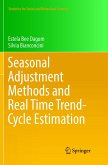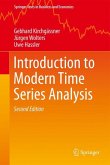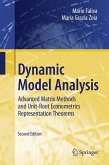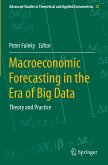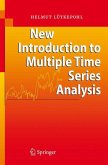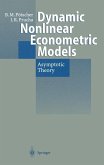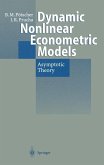The book provides deep insights into the signal extraction problem - especially at the boundary of a sample, where asymmetric filters must be used - and how to solve it optimally. The traditional model-based approach (TRAMO/SEATS or X-12-ARIMA) is an inefficient estimation method because it relies on one-step ahead forecasting performances (of a model) whereas the signal extraction problem implicitly requires good multi-step ahead forecasts also. Unit roots are important properties of the input signal because they generate a set of constraints for the best extraction filter. Since traditional tests essentially rely on one-step ahead forecasting performances, new tests are presented here which implicitly account for multi-step ahead forecasting performances too. The gain in efficiency obtained by the new estimation method is analyzed in great detail, using simulated data as well as 'real world' time series.
The material contained in this book originated in interrogations about modern practice in time series analysis. - Why do we use models optimized with respect to one-step ahead foreca- ing performances for applications involving multi-step ahead forecasts? - Why do we infer 'long-term' properties (unit-roots) of an unknown process from statistics essentially based on short-term one-step ahead forecasting performances of particular time series models? - Are we able to detect turning-points of trend components earlier than with traditional signal extraction procedures? The link between 'signal extraction' and the first two questions above is not immediate at first sight. Signal extraction problems are often solved by su- ably designed symmetric filters. Towards the boundaries (t = 1 or t = N) of a time series a particular symmetric filter must be approximated by asymm- ric filters. The time series literature proposes an intuitively straightforward solution for solving this problem: - Stretch the observed time series by forecasts generated by a model. - Apply the symmetric filter to the extended time series. This approach is called 'model-based'. Obviously, the forecast-horizon grows with the length of the symmetric filter. Model-identification and estimation of unknown parameters are then related to the above first two questions. One may further ask, if this approximation problem and the way it is solved by model-based approaches are important topics for practical purposes? Consider some 'prominent' estimation problems: - The determination of the seasonally adjusted actual unemployment rate.
Hinweis: Dieser Artikel kann nur an eine deutsche Lieferadresse ausgeliefert werden.
The material contained in this book originated in interrogations about modern practice in time series analysis. - Why do we use models optimized with respect to one-step ahead foreca- ing performances for applications involving multi-step ahead forecasts? - Why do we infer 'long-term' properties (unit-roots) of an unknown process from statistics essentially based on short-term one-step ahead forecasting performances of particular time series models? - Are we able to detect turning-points of trend components earlier than with traditional signal extraction procedures? The link between 'signal extraction' and the first two questions above is not immediate at first sight. Signal extraction problems are often solved by su- ably designed symmetric filters. Towards the boundaries (t = 1 or t = N) of a time series a particular symmetric filter must be approximated by asymm- ric filters. The time series literature proposes an intuitively straightforward solution for solving this problem: - Stretch the observed time series by forecasts generated by a model. - Apply the symmetric filter to the extended time series. This approach is called 'model-based'. Obviously, the forecast-horizon grows with the length of the symmetric filter. Model-identification and estimation of unknown parameters are then related to the above first two questions. One may further ask, if this approximation problem and the way it is solved by model-based approaches are important topics for practical purposes? Consider some 'prominent' estimation problems: - The determination of the seasonally adjusted actual unemployment rate.
Hinweis: Dieser Artikel kann nur an eine deutsche Lieferadresse ausgeliefert werden.
From the reviews:
"The aim of the author is ... to describe established procedures which are implemented in 'widely used' software packages. ... The book can be of great interest for all specialists working in the area of nonlinear systems state and parameter estimation and identification. It will be of significant benefit for time series estimation and prediction in many applications." (Tzvetan Semerdjiev, Zentralblatt MATH, Vol. 1053, 2005)
"The aim of the author is ... to describe established procedures which are implemented in 'widely used' software packages. ... The book can be of great interest for all specialists working in the area of nonlinear systems state and parameter estimation and identification. It will be of significant benefit for time series estimation and prediction in many applications." (Tzvetan Semerdjiev, Zentralblatt MATH, Vol. 1053, 2005)


